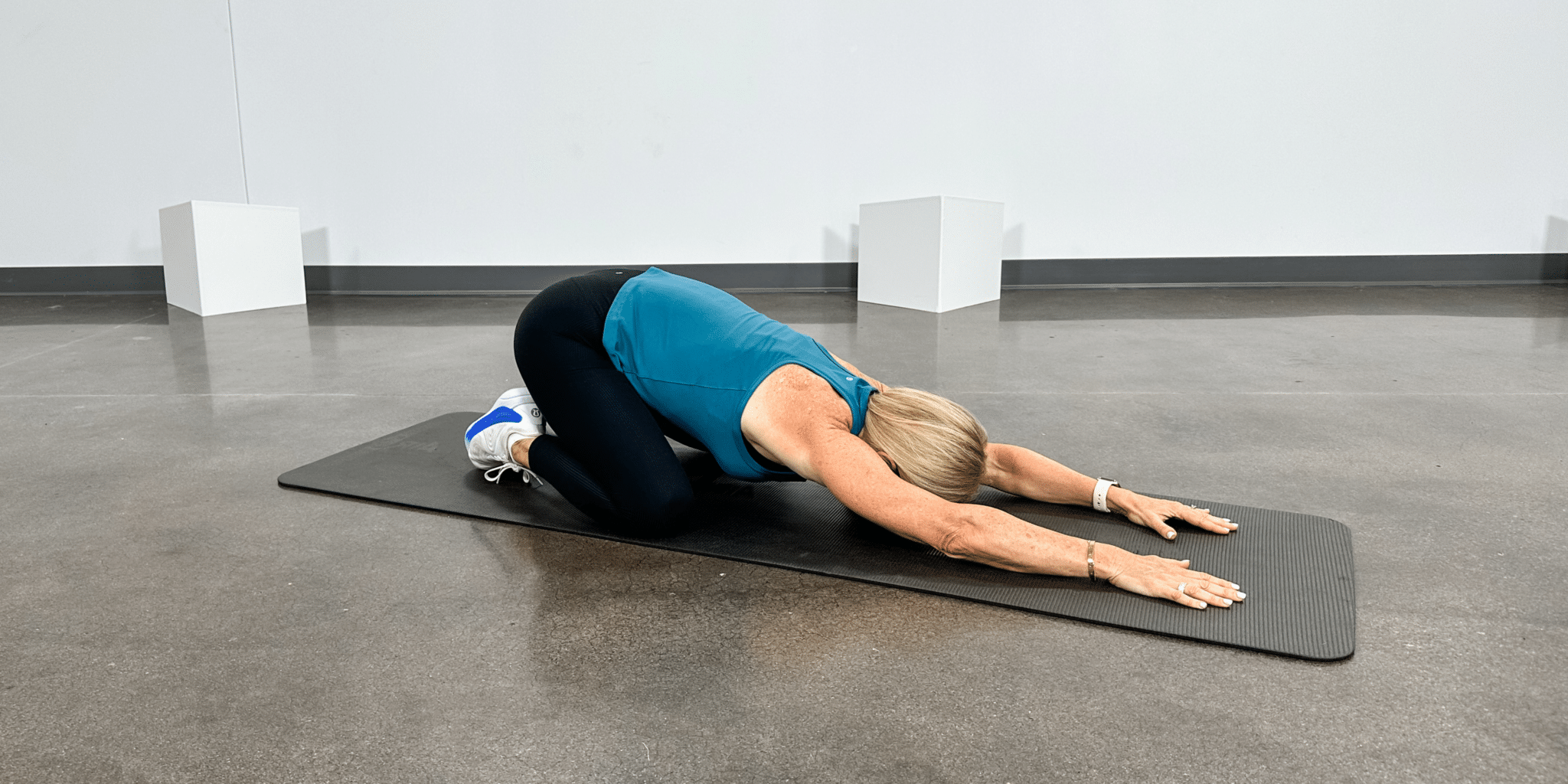10 Posture Exercises to Help You Stand Tall and Feel Better
Discover 10 posture exercises that will strengthen your back, core, and shoulder muscles to help you stand taller and feel stronger.
Whether you’re at the office, hitting the gym, or simply going about your daily activities, maintaining good posture is essential—not just for appearances, but for your overall well-being.
Good posture strengthens your body, increases flexibility, and promotes balance, reducing back pain and boosting energy levels. Additionally, proper alignment minimizes stress on muscles and ligaments, lowering injury risk.
And let’s not overlook the mental health benefits; studies suggest that maintaining an upright posture can enhance mood, decrease negative thoughts, and combat fatigue.
Ready to improve your posture and reap these benefits? Here are 10 posture exercises designed to help you stand taller and feel better. They work on strengthening the back muscles, core, and shoulders.
1. Child’s Pose
This restful yoga pose gently stretches your lower back, hips, and thighs, promoting relaxation and flexibility.
How to Perform Child’s Pose
Kneel on the floor, sit back on your heels, and stretch your arms forward. Rest your forehead on the mat and hold for a few deep breaths.
2. Cat-Cow
This exercise increases spine flexibility and strengthens your core muscles, relieving tension in your back.
How to Perform Cat-Cow Pose
Start on all fours. Inhale and arch your back (Cow), then exhale and round your back (Cat). Repeat for several cycles.
3. Forward Fold
This stretch elongates your spine, calms your mind, and releases tension in your neck and shoulders.
How to Perform the Forward Fold
Stand with your feet hip-width apart. Hinge at your hips and fold forward, reaching towards the floor. Hold for a few breaths.
4. Standing Chest Opener
This exercise opens up your chest, countering the effects of slouching and promoting a more upright posture.
How to Perform the Standing Chest Opener
Stand tall and clasp your hands behind your back. Gently lift your arms, opening your chest. Hold for a few breaths.
5. Glute Bridge
Strengthening your glutes supports your lower back and improves posture by realigning your pelvis.
How to Perform a Glute Bridge:
Lie on your back, bend your knees, and place your feet flat on the floor. Lift your hips towards the ceiling, hold, and lower.
6. Thoracic Spine Opener
This exercise enhances mobility in your upper spine, which is crucial for maintaining good posture.
How to Perform a Thoracic Spine Opener
Lie on your side with knees bent. Extend your top arm and rotate your upper body to open your chest towards the ceiling. Return and repeat on the other side.
7. Plank with Arm Reaches
This variation of the plank challenges your core, shoulders, and back, helping you build a strong foundation for better posture.
How to Perform Plank with Arm Reaches
Assume a plank position. Reach one arm forward, hold briefly, and return it. Alternate arms while maintaining stability.
8. Mid Back Rows
Strengthening your back muscles helps you counteract the slouching that can occur from sitting too much.
How to Perform Mid Back Rows
Using a resistance band or weights, pull them towards your chest while keeping your elbows close to your body. Squeeze your shoulder blades together.
9. Doorway Stretch
This stretch releases tension in your chest and shoulders, encouraging a more open and upright posture.
How to Perform the Doorway Stretch
Stand in a doorway, place your hands on the frame, and lean forward slightly to stretch your chest.
10. Pilates Swimming
This dynamic exercise enhances your core strength and back stability, contributing to improved posture.
How to Perform the Pilates Swimming Move
Lie face down, extend your arms and legs, and lift them off the floor. Flutter your arms and legs in a swimming motion.
Incorporating these exercises into your routine can make a significant difference in how you carry yourself every day. Consistency is key, so aim to perform these exercises regularly to enjoy a more aligned and confident posture.
Other Tips To Improve Posture
Having good posture is all about the activities you incorporate in your daily life.
I love that my Apple Watch tells me to stand up every hour. When working on my computer, I can get super focused and never move for hours. By just simply standing up, moving your spine, doing a few cat-cows, you are helping your body lubricate your joints.
Good ergonomics while sitting at your desk matter also. Keep your monitor at eye level. Sit up tall and keep your shoulders away from your ears, meaning do not hold tension in your neck.
Keep your feet on the ground. Even investing in a lumbar support for your chair may help.
Do Posture Correcting Devices Work?
While posture-correcting harnesses might seem like a quick fix, the real, lasting solution lies in strengthening your body from the inside out. These devices might provide temporary relief by holding your body in the correct position, they don’t actively strengthen the muscles needed to maintain proper posture on their own.
These devices often do the work that your muscles should be doing, leading to muscle weakness over time. Once you remove the harness, there’s a good chance you’ll revert to poor posture because the underlying muscular support hasn’t been developed.
The approach I recommend is focusing on exercises that strengthen the muscles responsible for good posture, particularly the back, core, and shoulders. This way, you build the strength necessary to maintain proper alignment without needing an external device. By consistently engaging in strength training, especially exercises that target postural muscles, you not only improve your posture but also promote long-term spinal health, reducing the risk of injury or discomfort.
Remember, standing tall isn’t just about looking good—it’s about feeling good too.
